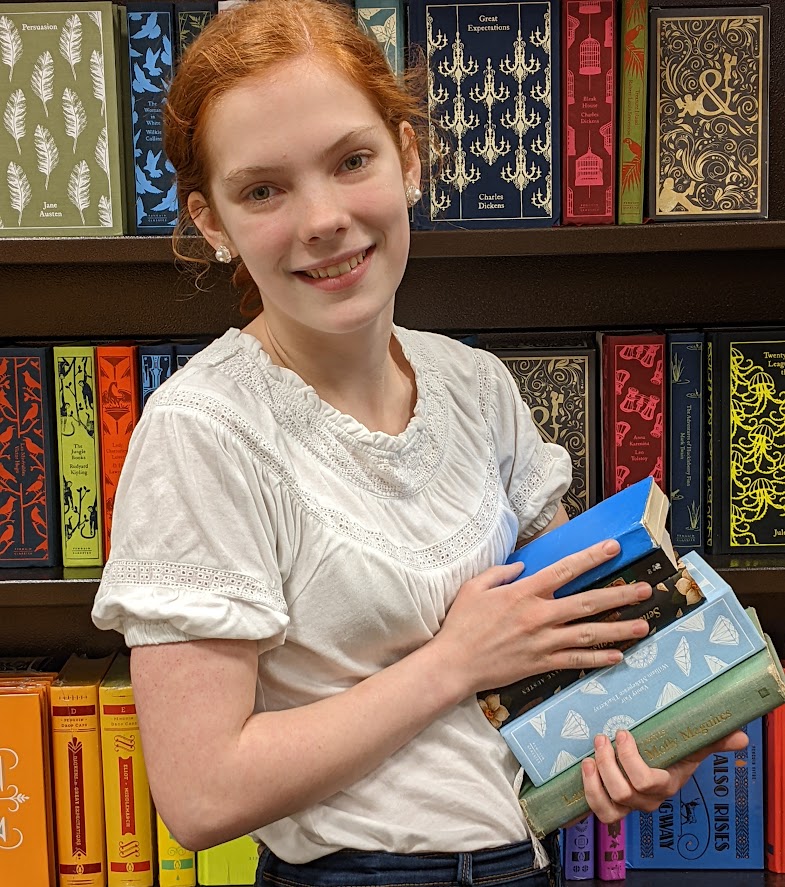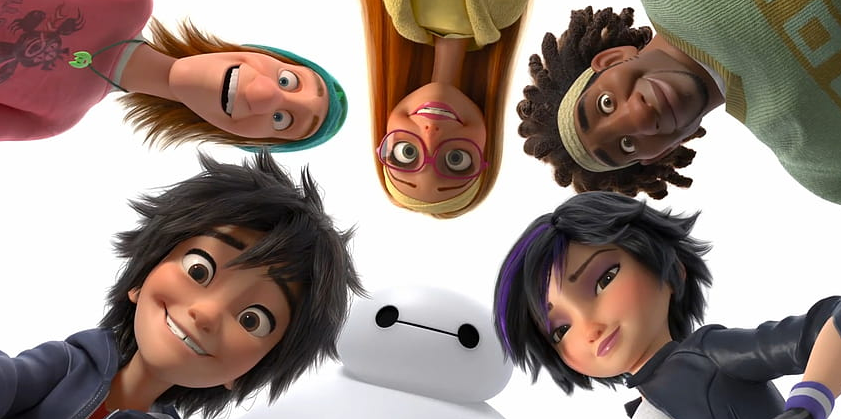Cliches are the bane of every young writer’s story. We’ve all had moments while enthusiastically writing when we come to a screeching halt and realize that this character we’ve poured so much time and energy into is actually just the cliche everyone’s heard about a dozen times before. Combing through pages of story plans (if you’re a plotter like me) or an entire first draft (if you’re a panster like Sophia) and looking for cliches can be one of the most exhausting aspects of writing. But discovering a character is a big-time cliche after writing him irreparably into your multi-layered plot is one of the most discouraging discoveries you can make while writing.
But what if I told you that even cliches can be manipulated and turned into one of your greatest writing assets? What if they could actually enhance your story, rather than be a detriment? What if you could turn your tired old cliche character into your writing superpower, so to speak?
If you have a cliched character that needs fixing or just want to learn how to craft fool-proof disguises for jaw-dropping plot twists, stick around.
Big Hero Six
Hiro Hamada is a 14-year-old genius who graduated highschool at 13 and has no interest in college. He spends his days betting on illegal bot fights — and winning. Every time. Now that he’s applied his genius toward making his robot the best there is, he’s rolling in money. And he has absolutely no concern over the fact that he’s breaking the law and spending time with some pretty shady individuals.
But one visit to his brother’s robotics lab changes all of that. Suddenly, the trajectory of Hiro’s entire life changes. Bot fights cease to matter. All Hiro wants is to make it into his brother’s college, where a wealth of knowledge and discovery awaits someone with a mind like his. So he enters a contest set up by the school with one goal in mind — winning first prize and getting a scholarship into San Fransokyo Institute of Technology.
After weeks of work and planning, Hiro comes up with a technological masterpiece that blows all other contestants out of the water — microbots. Even Robert Callaghan, a genius robotics professor at the school, takes an interest in Hiro, delivering his scholarship personally. And he’s not the only one. Alistair Krei, the CEO of a technological giant, offers to purchase Hiro’s microbots for an enormous sum. But Hiro now wants more than a huge paycheck — he has a renewed thirst for knowledge that he must explore at the robotics lab. Callaghan makes it clear that he views Alistair Krei as untrustworthy, and that if Hiro wants to push the boundaries of robotics with Callaghan, he better play it safe and decline Krei’s offer.
After Hiro makes this choice, Krei becomes icy and sinister, and is even caught attempting to steal one of Hiro’s microbots. Later that night, the building where the contest was being held burns to the ground, killing Professor Callaghan and supposedly destroying Hiro’s microbots. But when the bots are found to be missing, Krei instantly becomes the prime suspect. He’s a powerful man, used to getting what he wants, and the clear villain of Hiro’s story.
Hiro and his friends begin investigating the disappearance of his technology and find that Krei not only stole Hiro’s tech, but also began mass producing his microbots. They have several unprepared encounters with the masked perpetrator, but it isn’t until later on that they are able to peel back the mask and discover that it isn’t Krei at all, but Professor Callaghan, supposedly killed by the arsonist’s fire. He used Hiro’s microbots to survive the catastrophe and escape unscathed, and now he plans to use them to punish Krei for a risky experiment that sent his daughter through a portal from which she never returned.
Well, no one saw that coming. Callaghan, a generally good-natured and supposedly dead college professor turns out to be an evil mastermind, while Krei is merely an ambitious entrepreneur who can be a bit of a coward. But what connects this plot twist and cliches, and how can you use both in your writer’s arsenal?
What Connects Plot Twist and Cliches?
In short, predictability. The best plot twists are so awesome because no one saw them coming, and cliches are so tiresome because everyone has seen them a dozen times before.
Predictability can play a huge part in how your story is perceived. Even with expertly crafted characters, a fascinating world, and compelling dialogue, most readers will put down a story they could tell themselves. They read to be surprised and inspired, and predictability is never surprising and rarely inspiring.
Cliches are so tiresome because they are predictable. We know the old mentor is going to end up dead, the chosen one will triumph over the evil mastermind, and that icy, powerful executive is just itching to put on a dark cloak and wreak havoc on our protagonist’s world. Because of predictability, cliches are some of the worst things to come across in fiction, both in your own work and the work of others.
On the other hand, plot twists can make even the most hesitant readers one hundred percent invested in your plot. When you are able to sneak around a reader’s expectations and shock them with a ground-breaking plot twist they never expected, they instantly want to know more about your world, your characters, and most of all what other tricks you have scattered across your plot.
But plot twists are difficult. Like cliches, some have been used so many times that an observant reader will be able to pick up on them chapters before they happen, even with minimal foreshadowing. How can we make sure that a plot twist is nearly foolproof?
By hiding it behind a cliche.
Alistair Krei
Alistair Krei is a perfect example of hiding a plot twist behind a cliche. Viewers assumed they knew exactly where the plot was headed because the writers played right into a very well-worn cliche when introducing Krei. He was ambitious, and almost sinister when he didn’t get his way. And he was a rich and powerful executive. Sound familiar? That’s because so many stories have a rich executive as their villain. There are a few stories where a friendly professor turns out to be an evil mastermind, but not enough to deter the viewers from suspecting the glaringly cliched Krei. Because of this, the writers of Big Hero Six were able to surprise even the most observant of viewers.
And this doesn’t work for only villains, or even just for family animations, either. This technique applies to plot twists on any genre.
My original plan for this article was to write about a character from an action adventure series I’m currently watching, where they used the exact same technique, but with a few clever changes. For one, the writers reversed it to hide a traitor. They also read their audience and picked a subtler cliche, but the technique worked just as well, if not better, than when used in Big Hero Six. The plot twist was so well hidden that it left me in complete denial for 24 hours while I tried to come up with excuses for the traitor’s behavior.
That’s the sort of plot twist I want to write. And I’ve never seen it so well executed as when writers hide plot twists behind cliches.
So take this little-used technique and run with it. Have a cookie-cutter old grandmotherly figure? Maybe she’s secretly the villain! Have a wise old wizard who constantly murmurs confusing and vaguely “wise” proverbs? Maybe he isn’t as wise as your young mentor thinks. The hip flask he always drinks from might actually be full of the alcohol he can’t seem to live without. And those “wise” proverbs might just be as confusing as they sound.
There is so much to explore here, and do many cliche-plot twists pairings that have never been tried before. The options abound, and the results include the most unexpected plot twists I’ve ever seen. The only limit is your imagination.



What stories have the best plot twists? Did they use the technique above, or a different one? And how was the article? Too sweet? Too sour? Just right? Comment below and let us know!


Hi! My name is Mara, and I’m a Christian artist, violinist, and blogger. I remember the day that I decided that I would learn something new about what makes a good story from every book I picked up — whether it was good, bad, or a mixture of both. I use this blog as a way of sharing some of the tips and tricks I’ve learned, and highlight which books, cartoons, and movies have taught me the most about writing an awesome story.


YEEEEEESSSS!!!!! BH6! I cried for joy when I saw the cover picture! They are my absolute favorite! I’ve seen the movie way to many times, seen the show over and over, and I was just thinking about Hero and Baymax yesterday! (TBH, when I went to see it for the first time, I thought it was the sixth sequel for a movie “Big Hero!” LOL)
None of that ever occurred to me. (I always get caught up with Tadashi… *sad sigh*) It’s all so very interesting. Makes you wonder if some teenaged genius was writing the plot… hmmm.
I had the same initial thought when I heard about Big Hero Six, too! (“Wow, they’ve already made six of these? How am I only hearing about this now?”) I’m glad this article brought something new to a well-known family favorite of yours. I didn’t realize what they were doing to hide their plot twist the first time, either, but it’s a family favorite in our house, as well, and my siblings have watched it over and over again!
Thanks Mara! This article is just right! This technique might be really helpful in my writing
I’m so glad you’ll use it!